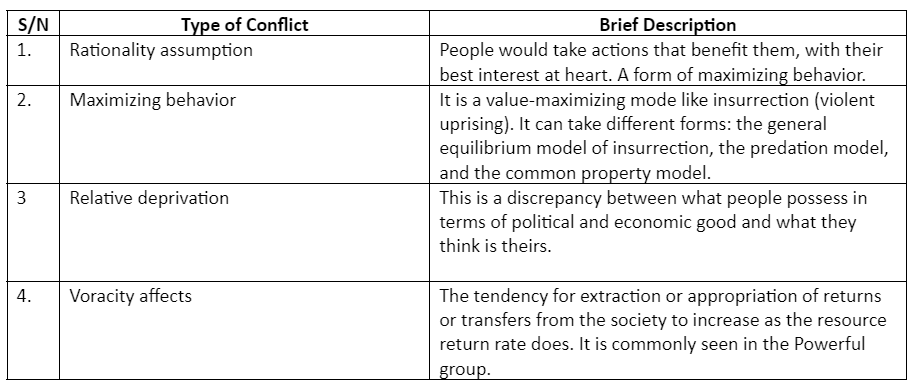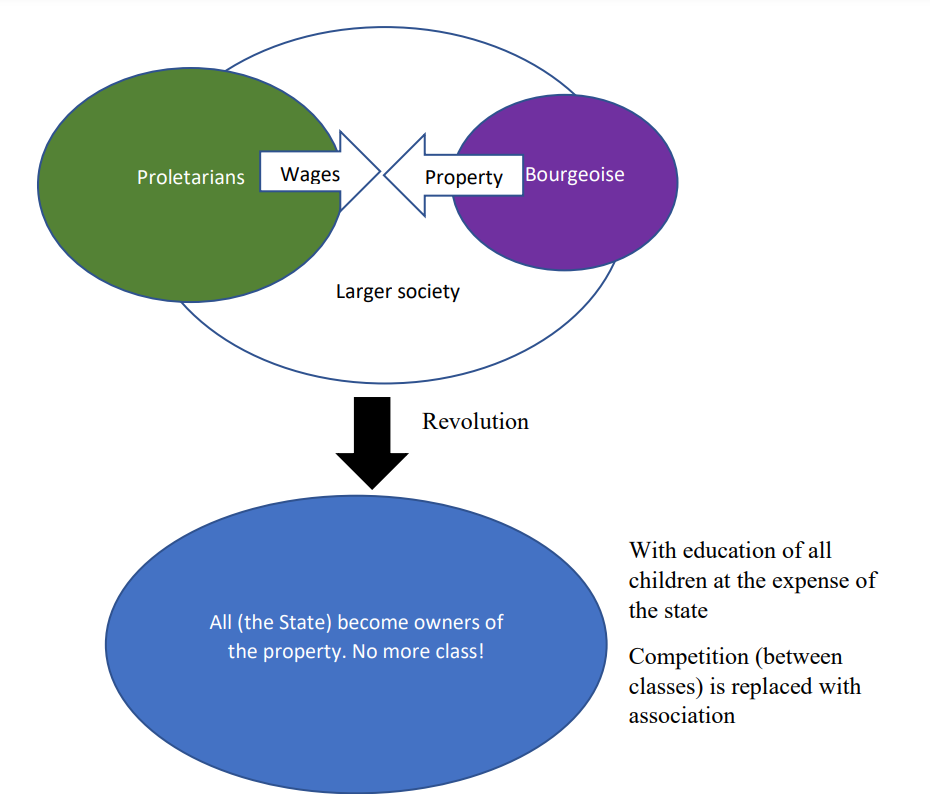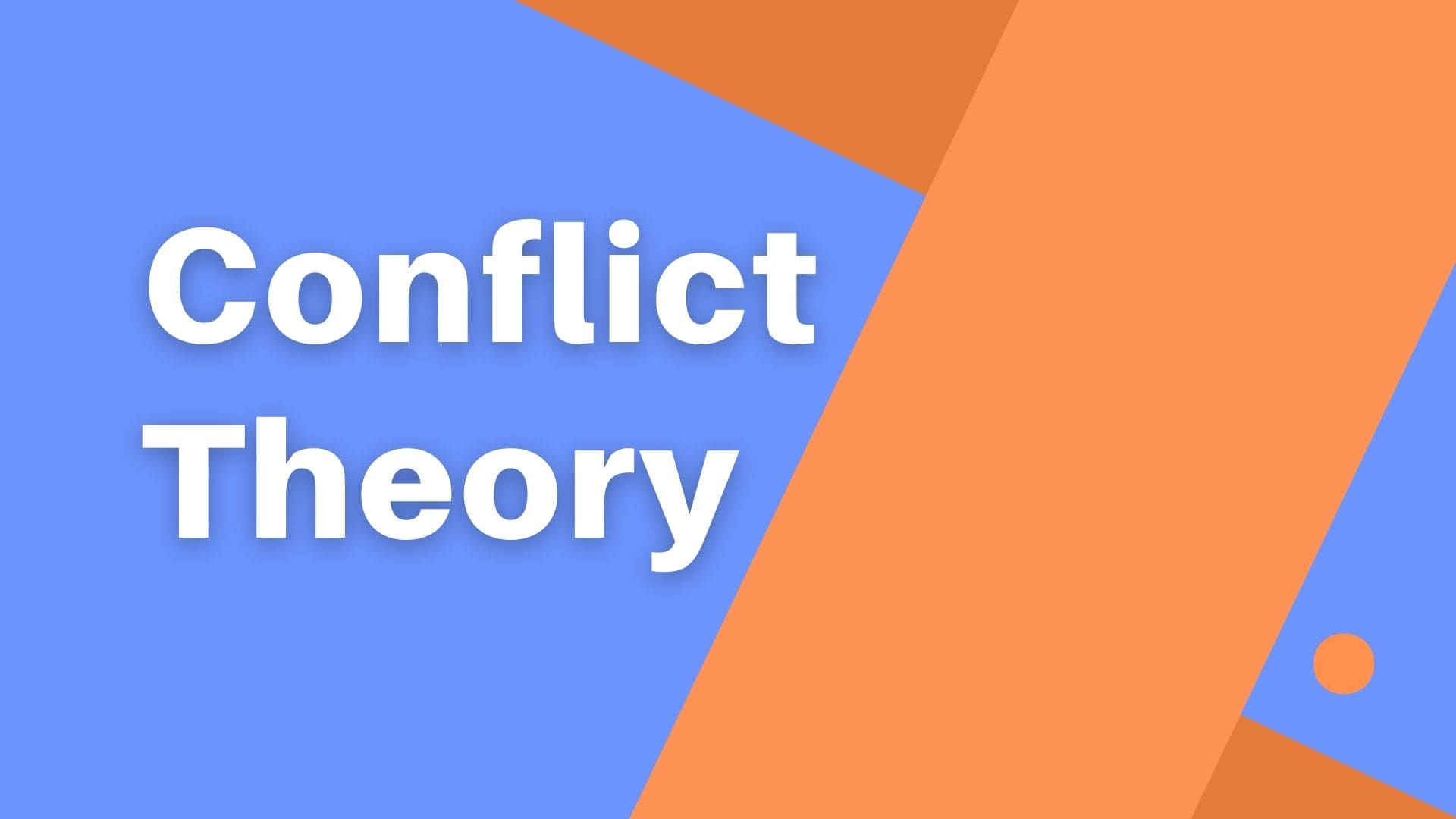Neoclassical economy says that the scarcity of resources or uneven resource distribution causes conflicts. Participants in the economy compete for a finite supply of resources.
Contracts are used to address conflicts of interest, and they require both parties to state their expectations and promises clearly. Contracts protect the interests of all parties concerned and result in a situation in which everyone comes out ahead. There is potential for disagreement if the contract is not acceptable.
Social conflict arises when coercive power is used, and domination exists. In addition, it entails the struggle or movement of people toward the same goal.
A competitive atmosphere increases conflict among parties. These tensions manifest themselves in modern economies in the form of competitive, oligopolistic, or monopolistic markets, which are the settings for the battle between rationality and maximizing.
Rational conflicts include business negotiations, trade unions, and employers. Conflicts can lead to various negative outcomes, including war, strikes, negotiations, criminal deterrence, price wars, class wars, race wars, and more. There are instances in which it is brought under control at an earlier stage by the equitable distribution of wealth or resources.
The origins of conflict theory can be traced back to economics, a subfield of human behavior that focuses on the satisfaction of needs and the promotion of well-being. It is a broad theory that attempts to explain how society functions.
What is Conflict Theory?
Definition: Sociologists Karl Marx put conflict theory forward on the imbalance in societal privileges or opportunities leading to strife and conflicts.
Other sociologists contributing to conflict theory include Max Weber, Emile Durkheim, etc. They have developed many ideas, including the voracity effect, relative deprivation (RD), rent-seeking predation, public choice, destructive activity, powerful groups/common property models, non-aggressive equilibrium, revolutionary utopianism, and rationality.
These ideas are outlined in the table that follows.

Karl Marx Conflict Theory
According to the Marxian perspective, a stratification system exists as a reciprocal relationship between the social groups and the forces of production. Society is not homogeneous; it includes an upper and a lower class.
This class is not based on position, status, or income but on ownership of means of production. Means of production refer to all the physical and abstract resources aside from labor.

Bourgeois and Proletarians
The ruling capitalist or bourgeois use the means of production to oppress the lower class or proletarians, who are regarded as mere laborers. Sometimes laborers establish a class with common interests and organize strikes through trade unions. When this happens, the bourgeois will sometimes turn to legal actions against the proletariat. The use of threat power through the application of force is what is understood to be coercion.
Features of Marx’s Conflict Theory
- Individuals are in a state of competition
- Inequality is inherent in social structures
- Conflicts result from the competition and structural imbalance and could reach the climate of revolutions. Revolution paves the way for radical change rather than gradual evolution.
- War is seen as a social unifier or cleanser
Assumptions of Conflict Theory
Infiltration of Politics Into the Scene
Even while it is possible to infer that property ownership implies affluence, property ownership establishes a social class rather than status or financial standing. The property consists of a variety of things, such as land, machinery, and ownership of slaves. The proletarians own only labor, which they sell for wages. The class that controls the property also controls the state, so there is a struggle going on to determine who will control the state and its property.
Class Interest: This latent drive transforms class membership into a struggle. Members of the same class have similar interests and are motivated to seek one other’s best interests.
Class Situation: This is the tendency for members of the same class to act. The members of a class eventually rely on one another, forming a society that shares wages and profits (for the bourgeoisie) (for the proletarians). Individuals form class to struggle with the opposite class.
Initially, this struggle can be confined to individual factories. In due course, it will spread to encompass several other factories. The coalition of factories expanded to the level of society, policies were established, and the conflict had the potential to become political. Its extensive adoption can be attributed to political forces.
The gap between social classes had grown wider, and the plight of exploited workers had deteriorated to the point where society was on the verge of disintegration; the class struggle had evolved into a proletarian revolution, in which a triumph for the proletariat would mean the nationalization of privately held property, ushering in an era in which there would be no social classes.

In summary, Karl Marx’s conflict theory says
- Classes are authority relationships based on property ownership
- A class defines groupings of individuals with shared interests
- Classes are antagonistic because of respective interests
- Political organizations become an instrument of class struggle
- The class struggle results in structural change
Comparison Between Conflict Theory and Functionalism
Both conflict theory and functionalism are macro theories that aim to explain how societies function; therefore, they are comparable in this regard.

Some modern responses to Marx’s conflict theory
- Capital ownership of a company has now become separated from management, as seen in Joint-stock companies.
- Division among workers has persisted, along with skill groups.
- The development of a large middle class and social mobility have stiffened class stability.
- Institutionalization of strikes through collective bargaining legislation.
- Narrowing rights and privileges of capital ownership through tax, etc.
Conclusion
Marx’s conflict theory is still very relevant today and demonstrates its significance, particularly when one considers the outcomes of a bipolar society with a significant wealth difference, which may result in tensions and civil unrest.
